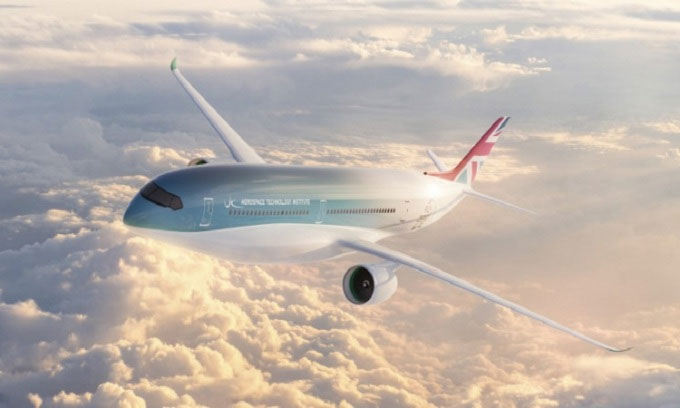The Aviation Technology Institute (ATI) announced on December 6 the design of a medium-sized, long-range aircraft powered by hydrogen, with a range exceeding 9,700 km.
The new aircraft design is part of the FlyZero initiative, funded by both government and private sectors, aimed at developing zero-emission aviation. In addition to the medium-sized aircraft, FlyZero’s partners have also proposed a design for a narrow-body aircraft using liquid hydrogen.

Design of the zero-emission passenger aircraft FlyZero. (Photo: ATI).
ATI did not disclose the timeline for when hydrogen-powered aircraft might enter the market or whether the technologies developed during the 12-month FlyZero project will have other applications. However, the organization believes that hydrogen-powered passenger aircraft will be commercially viable by the mid-2030s, aligning with Airbus’s plans to introduce the zero-emission aircraft, ZeroE, to the market.
Details released by ATI include wings that do not have attached fuel tanks, a cryogenic liquid hydrogen tank, fuel cells, an electrical system, and hydrogen gas turbines. According to the announcement, the medium-sized aircraft will feature a wingspan of 54 meters and a pair of turbofan jet engines that directly harness energy from the combustion of hydrogen. Hydrogen will be stored in two cryogenic fuel tanks in the rear fuselage and two smaller tanks in the front fuselage to maintain balance.
From London, the aircraft could fly directly to cities such as San Francisco, Delhi, Beijing, Vancouver, Mexico City, and Rio de Janeiro. ATI hopes the vehicle will operate at speeds comparable to current passenger aircraft.
The FlyZero project team consists of approximately 100 experts from various companies, including Airbus, Rolls-Royce, GKN Aerospace, Spirit AeroSystems, GE Aviation, Reaction Engines, NATS, EasyJet, and Eaton. According to ATI, the FlyZero design primarily supports the introduction of technology aimed at achieving long-term goals for carbon-free flight.


















































